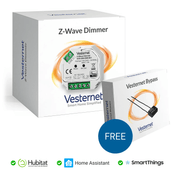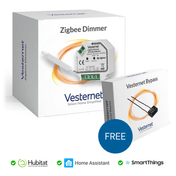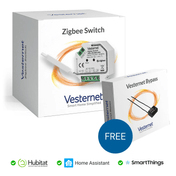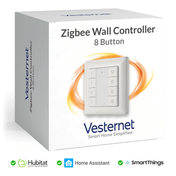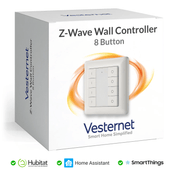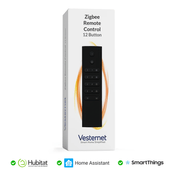Managing lighting across multiple brands and protocols without a central hub creates a frustrating maze of separate apps, incompatible devices, and limited automation potential. Many homeowners find themselves juggling different control systems for various manufacturers, leading to inefficient operation and missed opportunities for comprehensive home automation. Whether you're dealing with hive hub lights, trying to integrate govee home assistant compatibility, or planning to update home lighting systems, the fragmented approach severely limits what modern smart lighting can achieve.
Hub-based lighting control provides the comprehensive solution that transforms this chaos into seamless automation. Gateway controllers act as universal translators, unifying different wireless protocols and device types into a single, powerful management system. This centralised approach enables advanced scheduling, sophisticated scene programming, remote access capabilities, and the integration of sensors and voice control that makes professional-grade lighting automation accessible to every homeowner.
This complete guide will walk you through every aspect of hub-based lighting systems, from understanding fundamental concepts to implementing advanced automation features. You'll learn how to evaluate different gateway technologies, ensure device compatibility, create effective system plans, and troubleshoot common challenges to achieve lighting control that rivals professional installations.
Understanding Hub-Based Lighting Control Fundamentals
Hub-based lighting systems represent a paradigm shift from standalone smart devices to coordinated network architecture. Instead of each light switch or dimmer operating independently through manufacturer-specific apps, all devices communicate through a central gateway controller that manages the entire lighting ecosystem. This approach transforms individual smart devices into components of a unified automation system.

Key differences between hub and standalone systems:
- Centralised control through a single interface rather than multiple manufacturer apps
- Cross-brand compatibility enabling mixed device ecosystems
- Local processing and automation that functions without internet connectivity
- Advanced scheduling and scene programming capabilities
The architecture of hub-based systems relies on wireless mesh networks that extend range and improve reliability throughout your home. Unlike Wi-Fi devices that connect directly to your router, hub-controlled devices form self-healing networks where each device can relay signals, creating robust communication pathways that adapt when individual devices are offline or out of range.
Smart Home Gateway Technologies: Z-Wave vs Zigbee vs Wi-Fi
Understanding wireless protocols is crucial for selecting compatible devices and ensuring reliable communication throughout your lighting system. Each protocol offers distinct advantages and limitations that directly impact system performance, range, and integration capabilities. The choice between Z-Wave, Zigbee, and Wi-Fi-based solutions significantly influences your system's scalability and future expansion options.

Protocol comparison for lighting applications:
- Z-Wave: Excellent range (up to 100 metres), strong mesh networking, limited to 232 devices per network
- Zigbee: Lower power consumption, supports thousands of devices, shorter range requires more repeaters
- Wi-Fi: Direct router connection, higher bandwidth, but increased network congestion and power consumption
When planning to update home lighting systems, consider that Z-Wave and Zigbee create dedicated mesh networks separate from your main Wi-Fi, reducing congestion and improving reliability. These protocols also enable local processing through the hub, ensuring your lighting automation continues functioning even during internet outages, unlike many Wi-Fi-based solutions that require cloud connectivity.
Selecting the Right Gateway Hub for Your Lighting Needs
Gateway hub selection forms the foundation of your entire lighting automation system, requiring careful evaluation of current needs and future expansion plans. The right hub must support your chosen wireless protocols, handle your anticipated device count, and provide the integration capabilities necessary for comprehensive home automation. Consider factors like home size, construction materials, and desired automation complexity when making this crucial decision.

Essential hub evaluation criteria:
- Multi-protocol support (Z-Wave, Zigbee, Wi-Fi) for maximum device compatibility
- Local processing capabilities for reliable automation without internet dependency
- Open architecture supporting third-party integrations and custom programming
- Scalability to accommodate future system expansion and additional device types
Modern gateway controllers often support multiple protocols simultaneously, allowing you to integrate hive hub lights alongside Zigbee dimmers and Z-Wave switches within the same system. This flexibility proves invaluable when upgrading existing installations or taking advantage of specific device features from different manufacturers without being locked into a single ecosystem.
Smart Lighting Device Compatibility and Integration
Device compatibility extends beyond simple protocol matching to encompass feature support, installation requirements, and integration depth within your chosen hub ecosystem. Understanding compatibility matrices helps avoid costly mistakes and ensures optimal performance from every component in your lighting system. Different device types—smart switches, dimmers, and wall controllers—offer varying levels of functionality depending on their integration with your gateway hub.
Compatibility considerations for lighting devices:
- Protocol version support ensuring full feature access and future updates
- Power requirements and neutral wire availability for different switch types
- Load compatibility with LED, incandescent, and specialty lighting types
- Advanced features like energy monitoring, scene control, and status reporting
Integration depth varies significantly between devices and hubs, affecting features like govee home assistant compatibility, advanced scheduling options, and sensor-based automation triggers. Some devices provide basic on/off control while others offer comprehensive status reporting, energy monitoring, and sophisticated dimming curves that enable professional-quality lighting effects throughout your home.
Planning Your Hub-Based Lighting System
Systematic planning prevents costly mistakes and ensures optimal performance from your hub-based lighting installation. Begin with a comprehensive room-by-room assessment that identifies current lighting types, switch configurations, and desired automation features. This analysis forms the foundation for device selection, network design, and implementation strategy that maximises functionality while staying within budget constraints.

Planning methodology steps:
- Create detailed floor plans marking all existing switches, outlets, and lighting fixtures
- Identify priority rooms for initial implementation and phased expansion areas
- Document electrical requirements including neutral wire availability and load types
- Plan network topology considering device placement and signal repeater locations
Effective planning also considers future expansion possibilities and integration with other smart home systems. When you update home automation systems, having a clear roadmap ensures new additions integrate seamlessly with existing components. Consider how lighting automation will work alongside security systems, climate control, and entertainment devices to create comprehensive home automation that enhances daily living.
Implementation Guide: Setting Up Your Lighting Hub
Hub installation begins with optimal placement that ensures reliable communication with all planned devices while maintaining easy access for maintenance and troubleshooting. Position your gateway controller centrally within your home's floor plan, away from interference sources like routers, microwaves, and metal objects that can disrupt wireless signals. Consider ventilation requirements and power supply stability when selecting the final installation location.
Initial setup process:
- Configure network settings and establish secure communication protocols
- Update hub firmware to ensure latest features and security patches
- Begin device pairing starting with devices closest to the hub location
- Test each device thoroughly before proceeding to the next installation
Device pairing sequence significantly impacts network formation and overall system reliability. Start with devices that will act as signal repeaters—typically mains-powered switches and dimmers—before adding battery-powered sensors or portable controllers. This approach builds a strong mesh foundation that supports reliable communication as you expand the system throughout your home.
Advanced Lighting Automation and Scene Programming
Sophisticated automation transforms basic lighting control into an intelligent system that anticipates needs and responds to environmental conditions. Scene programming enables instant activation of complex lighting combinations that create the perfect ambience for different activities, times of day, or seasonal preferences. Advanced features like sensor integration and conditional logic create truly responsive environments that adapt automatically to changing circumstances.
Advanced automation capabilities:
- Time-based scheduling with seasonal adjustments and holiday programming
- Motion sensor integration for automatic activation and energy-saving shutoff
- Weather-responsive adjustments that adapt to natural light conditions
- Voice control integration for hands-free operation and accessibility
Complex automation rules can combine multiple triggers and conditions to create sophisticated responses that would be impossible with standalone devices. For example, your system might gradually brighten morning lights based on sunrise times, adjust evening scenes according to occupancy sensors, and automatically activate security lighting when the system detects unusual activity patterns throughout your home.
Troubleshooting and Maintaining Your Hub-Based System
Proactive maintenance ensures long-term reliability and optimal performance from your hub-based lighting system. Regular monitoring of device status, network health, and automation performance helps identify potential issues before they impact daily operation. Understanding common troubleshooting techniques enables quick resolution of connectivity problems, device malfunctions, and automation glitches that can occasionally occur.
Common maintenance tasks:
- Regular firmware updates for hub and connected devices to maintain security and functionality
- Battery replacement schedules for wireless sensors and portable controllers
- Network optimisation through device repositioning and repeater additions
- Automation rule reviews to ensure continued relevance and effectiveness
Network interference from new electronics, Wi-Fi equipment changes, or construction modifications can impact system performance over time. Monitoring tools within your hub interface provide valuable diagnostics that help identify communication problems, weak signal areas, and devices requiring attention. Regular system health checks enable preventive measures that maintain professional-level performance throughout your lighting automation system's lifespan.
Conclusion
Hub-based lighting control delivers unified management, enhanced automation capabilities, improved energy efficiency, and the flexibility to integrate devices from multiple manufacturers into one cohesive system. This approach eliminates the frustration of managing separate apps and incompatible devices while unlocking sophisticated automation features that transform your home's lighting from basic switches into an intelligent, responsive environment that adapts to your lifestyle and preferences.
Start your hub-based lighting journey by assessing your current setup and identifying priority areas for automation. Even small implementations provide immediate benefits while building the foundation for comprehensive home automation. Consider which rooms would benefit most from automated lighting, evaluate your existing devices for compatibility opportunities, and plan a phased approach that delivers value at each stage of implementation.
Ready to explore hub-based lighting solutions for your smart home? Browse our comprehensive collections of gateway controllers, smart dimmers, wireless switches, and wall controller dimmers to find the perfect components for your system. Our expert team is available to provide guidance on protocol selection, device compatibility, and system design to ensure your lighting automation project delivers professional results from day one.










